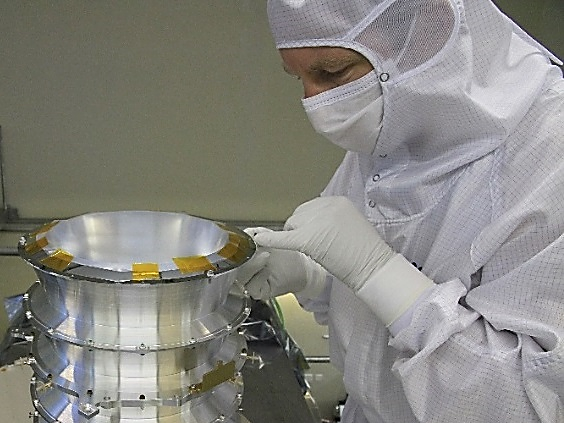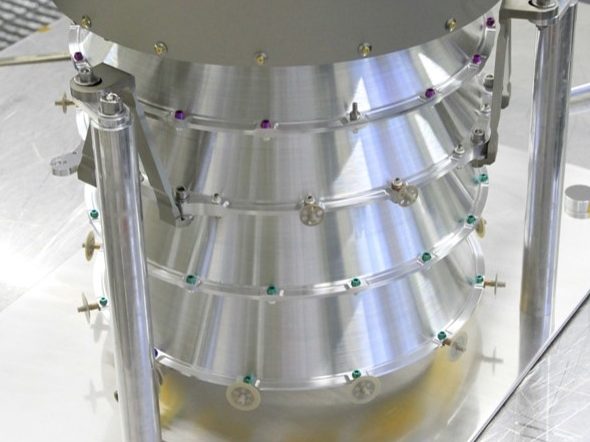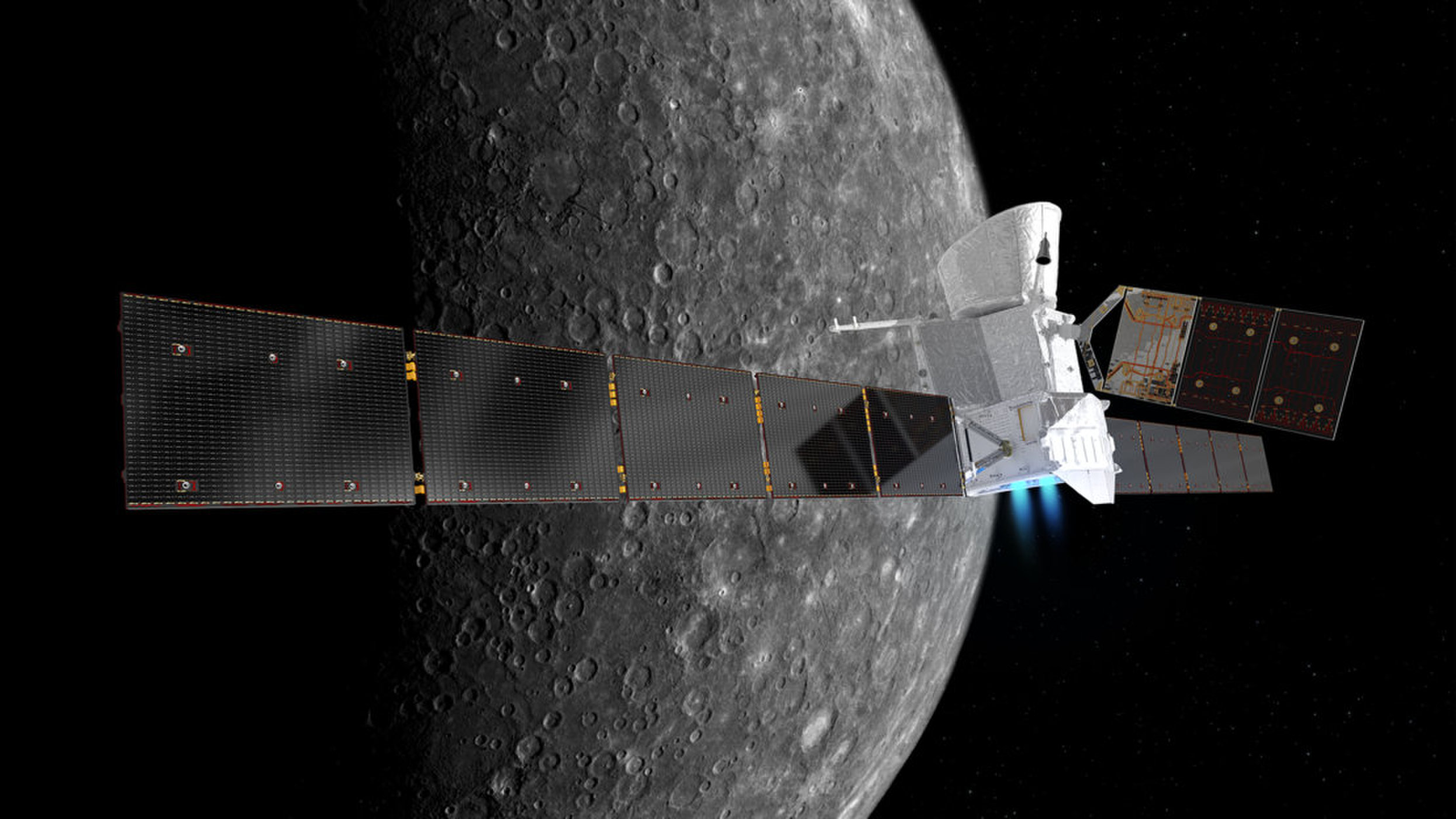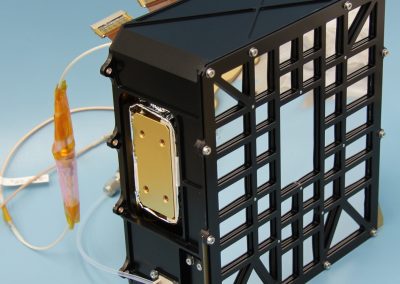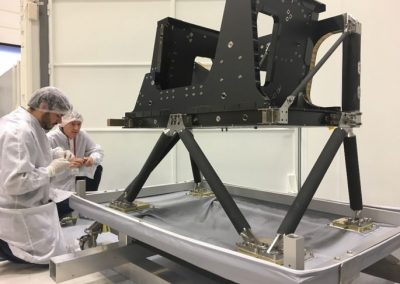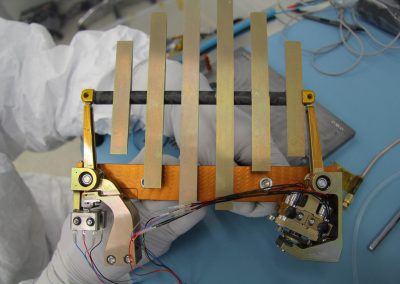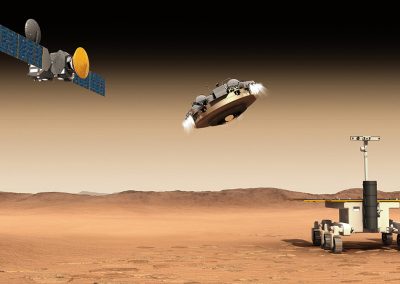Bepi Colombo Baffle
Almatech Contribution
The Reflective Baffle Unit (RBU) is positionned in front of the BELA instrument on board the Bepi Colomboa mission. The RBU acts as a reflective baffle based on Stavroudis design whose optical surface properties are thus essential as they govern its overall protective efficiency.
Almatech was responsible for the manufacturing design, the manufacturing, assembly testing and integration of the BELA Reflective Baffle Unit (RBU).
Almatech selected diamond machining in order to achieve the challenging requirements of a form accuracy < 20 µm and an optical surface quality Ra < 4 nm for the aluminium baffles.
Almatech performed all assembly, integration and testing operations in ISO 5 environment in order to comply with cleanliness and contamination requirements of PAC < 30 ppm and MOC < 50 ng/cm2.
“The BELA Reflective Baffle Unit was the first flight hardware delivered by Almatech. The project started in 2009 and finished in 2011, and 7 years later we are delighted to finally see the BepiColombo mission on its way to Mercury and to claim the first Almatech hardware in space!”
About the mission
BepiColombo is Europe’s first mission to Mercury. It has set off in 2018 on a journey to the smallest and least explored terrestrial planet in our Solar System. When it arrives at Mercury in late 2025, it will endure temperatures in excess of 350 °C and gather data during its 1 year nominal mission, with a possible 1-year extension. The mission comprises two spacecraft: the Mercury Planetary Orbiter (MPO) deleivered by ESA and the Mercury Magnetospheric Orbiter (MMO) delivered by JAXA, the Japan Aerospace Exploration Agency (JAXA).
About the payload
On the Mercury Planetary Orbiter (MPO), which is placed on a close orbit around Mercury, is mounted the BepiColombo Laser Altimeter (BELA). This instrument in synergy with other will provide detailed information on Mercury’s topography, surface roughness and tidal deformation.
The BELA consists of a Laser emitter and a 200 mm telescope to receive the reflected light from Mercury. Due to the harsh environment and high temperature, the telescope has to be protected from the sunlight. This task is achieved by the Receiver Baffle Unit (RBU).

